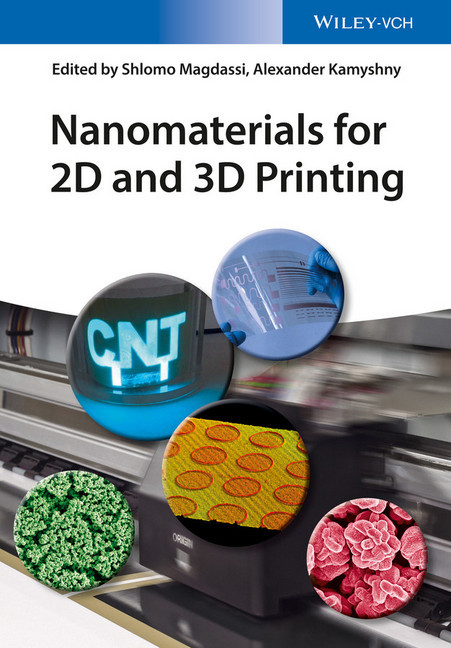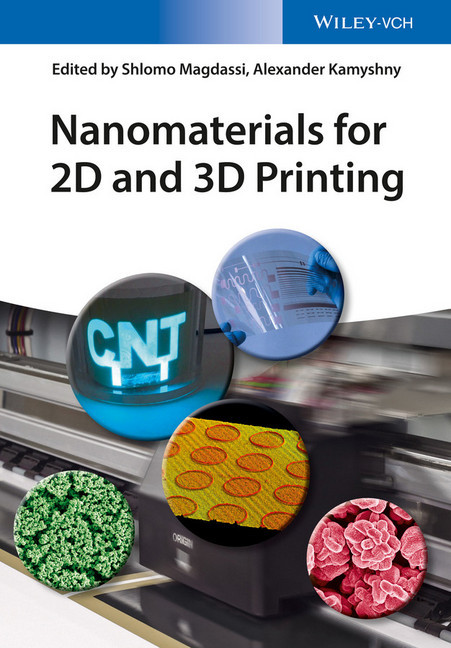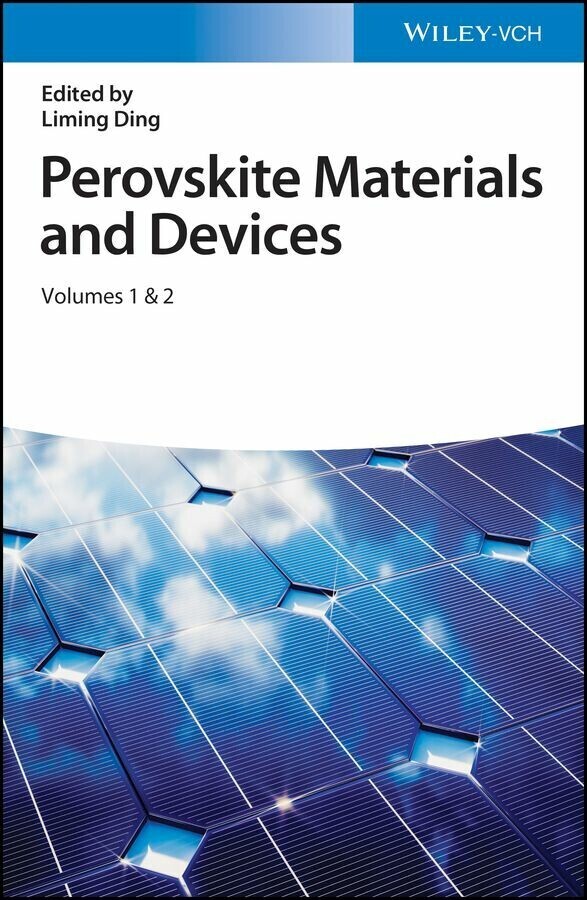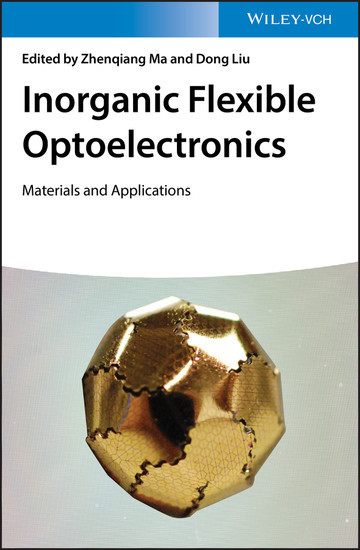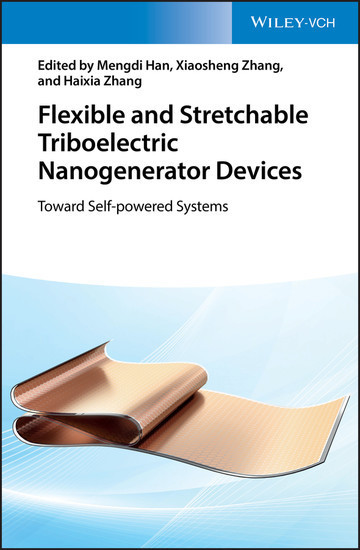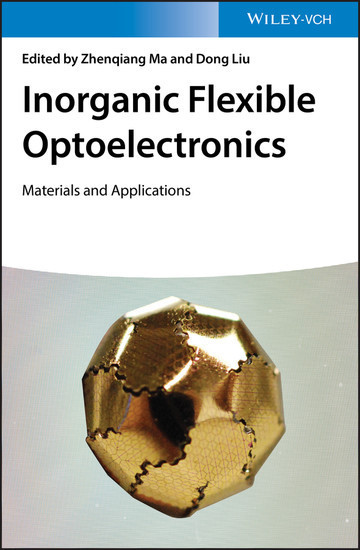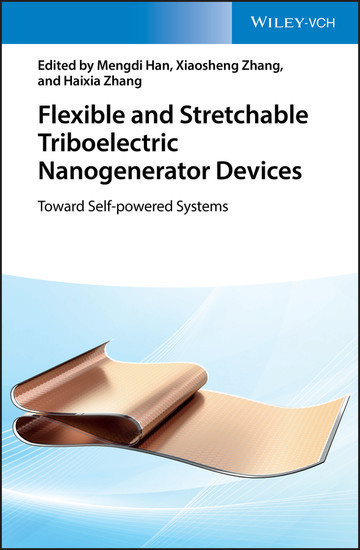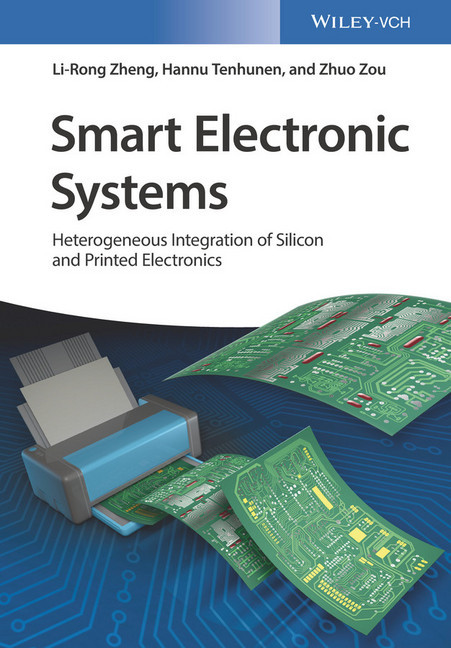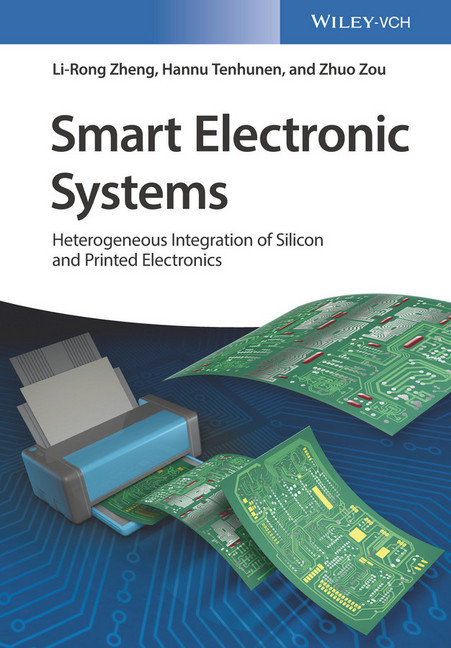Nanomaterials for 2D and 3D Printing
The first book to paint a complete picture of the challenges of processing functional nanomaterials for printed electronics devices, and additive manufacturing fabrication processes.
Following an introduction to printed electronics, the book focuses on various functional nanomaterials available, including conducting, semi-conducting, dielectric, polymeric, ceramic and tailored nanomaterials. Subsequent sections cover the preparation and characterization of such materials along with their formulation and preparation as inkjet inks, as well as a selection of applications. These include printed interconnects, passive and active modules, as well as such high-tech devices as solar cells, transparent electrodes, displays, touch screens, sensors, RFID tags and 3D objects. The book concludes with a look at the future for printed nanomaterials.
For all those working in the field of printed electronics, from entrants to specialized researchers, in a number of disciplines ranging from chemistry and materials science to engineering and manufacturing, in both academia and industry.
Shlomo Magdassi is a professor of applied chemistry at the Casali Center for Applied Chemistry, Institute of Chemistry and the Center for Nanoscience and Nanotechnology at the Hebrew University of Jerusalem, Israel.
His research focuses on formation, formulation and applications of micro and nanoparticles. These particles are used in delivery systems such as in cosmetics and pharmaceutics, and in inks, such as glass inks, conductive inks, 3D and 4D printing.
Prof. Magdassi has authored more than 200 publications, 25 book chapters and he is the scientific editor of 4 books. In addition to his scientific publications, he also has over 60 inventions on applications of colloids in industrial products, which led to some industrial activities such as worldwide sales and establishing new companies.
Alexander Kamyshny is a senior researcher of applied chemistry at the Casali Center for Applied Chemistry, Institute of Chemistry at the Hebrew University of Jerusalem, Israel.
His research focuses on colloid science, in particular on formation, stabilization and application of nanomaterials, especially metal nanoparticles and their utilization for conductive ink formulations and conductive coatings.
Dr. Kamyshny has authored 80 publications, 9 book chapters and 11 patents. He is a member of editorial board of Scientific Reports and of various international scientific societies. In addition to the fundamental research, he performed a number of industrial R&D projects.
Following an introduction to printed electronics, the book focuses on various functional nanomaterials available, including conducting, semi-conducting, dielectric, polymeric, ceramic and tailored nanomaterials. Subsequent sections cover the preparation and characterization of such materials along with their formulation and preparation as inkjet inks, as well as a selection of applications. These include printed interconnects, passive and active modules, as well as such high-tech devices as solar cells, transparent electrodes, displays, touch screens, sensors, RFID tags and 3D objects. The book concludes with a look at the future for printed nanomaterials.
For all those working in the field of printed electronics, from entrants to specialized researchers, in a number of disciplines ranging from chemistry and materials science to engineering and manufacturing, in both academia and industry.
Shlomo Magdassi is a professor of applied chemistry at the Casali Center for Applied Chemistry, Institute of Chemistry and the Center for Nanoscience and Nanotechnology at the Hebrew University of Jerusalem, Israel.
His research focuses on formation, formulation and applications of micro and nanoparticles. These particles are used in delivery systems such as in cosmetics and pharmaceutics, and in inks, such as glass inks, conductive inks, 3D and 4D printing.
Prof. Magdassi has authored more than 200 publications, 25 book chapters and he is the scientific editor of 4 books. In addition to his scientific publications, he also has over 60 inventions on applications of colloids in industrial products, which led to some industrial activities such as worldwide sales and establishing new companies.
Alexander Kamyshny is a senior researcher of applied chemistry at the Casali Center for Applied Chemistry, Institute of Chemistry at the Hebrew University of Jerusalem, Israel.
His research focuses on colloid science, in particular on formation, stabilization and application of nanomaterials, especially metal nanoparticles and their utilization for conductive ink formulations and conductive coatings.
Dr. Kamyshny has authored 80 publications, 9 book chapters and 11 patents. He is a member of editorial board of Scientific Reports and of various international scientific societies. In addition to the fundamental research, he performed a number of industrial R&D projects.
1;Cover;1 2;Title Page;5 3;Copyright;6 4;Contents;7 5;List of Contributors;15 6;Chapter 1 Printing Technologies for Nanomaterials;19 6.1;1.1 Introduction;19 6.2;1.2 Ink Formulation Strategies;22 6.3;1.3 Printing Technologies;24 6.3.1;1.3.1 Inkjet Printing;25 6.3.2;1.3.2 Laser-Induced Forward Transfer;29 6.3.3;1.3.3 Contact Printing Technologies;31 6.3.4;1.3.4 Photopolymerization;35 6.3.5;1.3.5 Powder Bed Technology;37 6.4;1.4 Summary and Conclusions;38 6.5;References;38 7;Chapter 2 Inkjet Printing of Functional Materials and Post-Processing;45 7.1;2.1 Introduction;45 7.2;2.2 Industrial Inkjet;46 7.3;2.3 Postprocessing of Metal-Based Inks for Conductive Applications;48 7.3.1;2.3.1 Mechanisms in Solid-State Sintering;50 7.3.2;2.3.2 Influence of Drying and Wet Sintering;52 7.3.3;2.3.3 Thermal Sintering;53 7.3.4;2.3.4 Chemical Sintering;53 7.3.5;2.3.5 Plasma Sintering;54 7.3.6;2.3.6 Sintering Using Electromagnetic Fields;55 7.4;2.4 Conclusion;60 7.5;References;61 8;Chapter 3 Electroless Plating and Printing Technologies;69 8.1;3.1 Introduction;69 8.2;3.2 Electroless Plating - Overview;72 8.2.1;3.2.1 Electroless Plating - Brief Overview;73 8.3;3.3 Seed Layer Printing;75 8.4;3.4 Electroless Plating on Printed Parts;75 8.4.1;3.4.1 Methods and Approaches;77 8.4.2;3.4.2 Electroless Metal Integration: Examples;78 8.5;3.5 Summary and Conclusions;81 8.6;References;82 9;Chapter 4 Reactive Inkjet Printing as a Tool for in situ Synthesis of Self-Assembled Nanoparticles;87 9.1;4.1 Introduction to Reactive Inkjet Printing;87 9.2;4.2 RIJ of Self-Assembled Au NPs;88 9.3;4.3 Parameters Influencing the Growth of Au NPs;92 9.4;4.4 Simplifying the Approach (Single Cartridge) Using Single Cartridge Step;95 9.5;4.5 Further Progress toward Reduction of Fabrication Time (1 min);95 9.6;4.6 Conclusion;97 9.7;References;97 10;Chapter 5 3D Printing via Multiphoton Polymerization;101 10.1;5.1 Multiphoton Polymerization;102 10.2;5.2 The Diffraction Limit;103 10.3;5.3 Experimental Setup;104 10.4;5.4 Materials for MPP;106 10.4.1;5.4.1 Introduction;106 10.4.2;5.4.2 Photoinitiators;106 10.4.3;5.4.3 Organic Photopolymers;107 10.4.4;5.4.4 SU-8;108 10.4.5;5.4.5 Hybrid Materials;108 10.4.6;5.4.6 Applications;109 10.5;5.5 Conclusions;114 10.6;References;114 11;Chapter 6 High Speed Sintering: The Next Generation of Manufacturing;125 11.1;6.1 The Need for the Next Generation of Additive Manufacturing;125 11.2;6.2 High Speed Sintering;127 11.3;6.3 Machine Setup & Parameter Control;127 11.4;6.4 Materials & Properties;130 11.5;6.5 HSS for High-Volume Manufacturing;131 11.6;6.6 Case Study: From Elite to High Street;133 11.7;6.7 Opening the Supply Chain;133 11.8;6.8 The Future of HSS and the Benefits of Inkjet;134 11.9;References;134 12;Chapter 7 Metallic Nanoinks for Inkjet Printing of Conductive 2D and 3D Structures;137 12.1;7.1 Introduction;137 12.2;7.2 Metallic Nanoinks: Requirements and Challenges;138 12.3;7.3 Synthesis and Stabilization of Metal NPs for Conductive Nanoinks;139 12.3.1;7.3.1 Synthesis;139 12.3.2;7.3.2 Stabilization;140 12.4;7.4 Formulation of Conductive Metallic Nanoinks;143 12.5;7.5 Formation of 2D Conductive Structures: Printing and Sintering;145 12.6;7.6 3D Printing of Conductive Patterns: Formation and Sintering;152 12.7;7.7 Applications of Metallic Inkjet Nanoinks in Printed Electronics;153 12.7.1;7.7.1 RFID Tags;154 12.7.2;7.7.2 Thin-Film Transistors;154 12.7.3;7.7.3 Electroluminescent Devices and Light-Emitting Diodes;154 12.7.4;7.7.4 Transparent Conductive Electrodes;155 12.7.5;7.7.5 Organic Solar Cells;156 12.8;7.8 Outlook;157 12.9;References;158 13;Chapter 8 Graphene- and 2D Material-Based Thin-Film Printing;179 13.1;8.1 Introduction;179 13.2;8.2 Printing Procedures;180 13.2.1;8.2.1 Ink Formulations;180 13.2.2;8.2.2 Jetting and Patterns;184 13.2.3;8.2.3 Drying;184 13.2.4;8.2.4 Posttreatments;189 13.3;8.3 Performance and Applications;190 13.3.1;8.3.1 Transparent Conductors;191 13.3.2;8.3.2 Micro-Supercapacitors;191 13.3.3;8.3.3 Photodetectors;19
Magdassi, Shlomo
Kamyshny, Alexander
Shacham-Diamand, Yosi
| ISBN | 9783527685820 |
|---|---|
| Artikelnummer | 9783527685820 |
| Medientyp | E-Book - PDF |
| Copyrightjahr | 2017 |
| Verlag | Wiley-VCH |
| Umfang | 376 Seiten |
| Sprache | Englisch |
| Kopierschutz | Adobe DRM |

